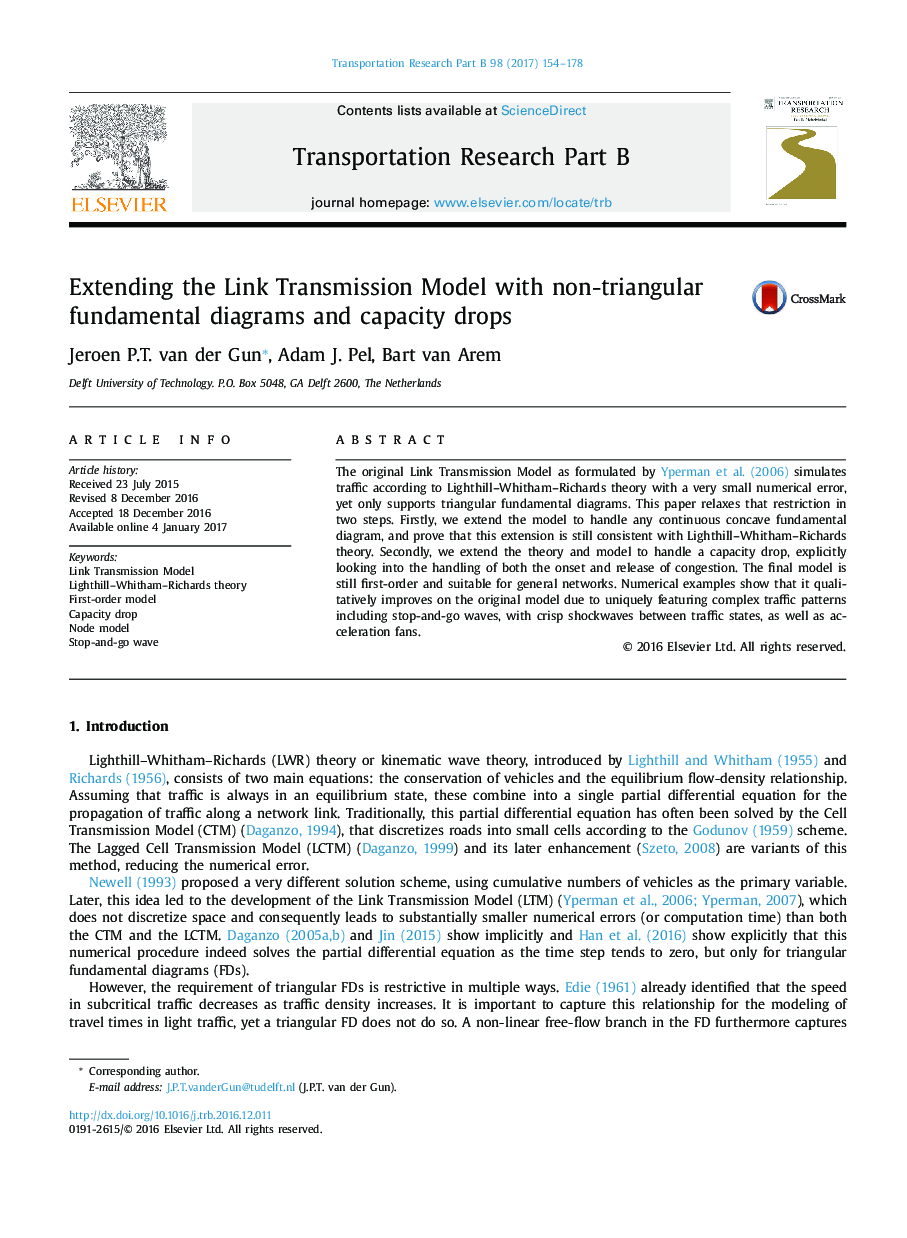| Article ID | Journal | Published Year | Pages | File Type |
|---|---|---|---|---|
| 5127121 | Transportation Research Part B: Methodological | 2017 | 25 Pages |
â¢We extend the Link Transmission Model with continuous concave fundamental diagrams.â¢We extend LWR theory with inverted-lambda style diagrams having capacity drops.â¢This support for capacity drops is added to our Link Transmission Model as well.â¢Our model reproduces acceleration fans, standing queues and stop-and-go waves.â¢It remains first-order, efficient, precise and applicable to networks.
The original Link Transmission Model as formulated by Yperman et al. (2006) simulates traffic according to Lighthill-Whitham-Richards theory with a very small numerical error, yet only supports triangular fundamental diagrams. This paper relaxes that restriction in two steps. Firstly, we extend the model to handle any continuous concave fundamental diagram, and prove that this extension is still consistent with Lighthill-Whitham-Richards theory. Secondly, we extend the theory and model to handle a capacity drop, explicitly looking into the handling of both the onset and release of congestion. The final model is still first-order and suitable for general networks. Numerical examples show that it qualitatively improves on the original model due to uniquely featuring complex traffic patterns including stop-and-go waves, with crisp shockwaves between traffic states, as well as acceleration fans.
